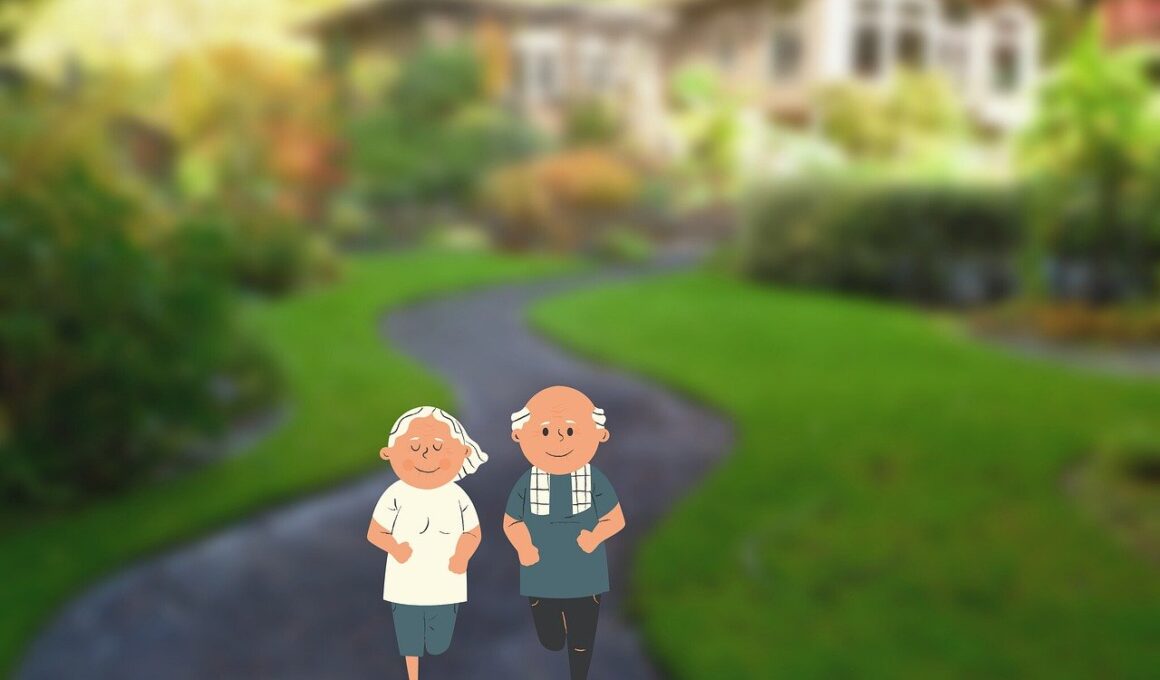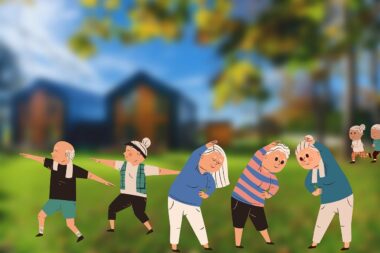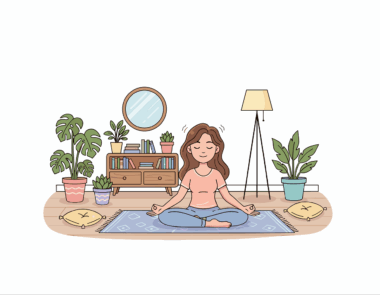Using Breath Control to Optimize Senior Dance Fitness
Incorporating breath control into dance fitness routines offers substantial benefits for seniors. As we age, maintaining flexibility and stamina becomes increasingly vital. One effective way to enhance these aspects is through breathing exercises. These exercises not only improve lung capacity but also facilitate better oxygen flow to the muscles. This process is essential for seniors who participate in dance fitness, as it equips them with the endurance necessary for prolonged activities. Proper breath control can significantly enhance performance, reducing fatigue during exercise sessions. Moreover, seniors often experience increased anxiety or stress; incorporating focused breathing techniques helps promote relaxation. These methods create a rhythm which can be vital to synchronized dance routines. The mind-body connection gained from controlled breathing can enhance overall well-being. Additionally, seniors often face challenges with maintaining balance; breath control can aid in stabilizing the core. With a stronger core, they gain confidence, improving their performance levels. Establishing a routine that includes breath control can foster an uplifting atmosphere in classes, supporting social interaction among peers. Altogether, focusing on breathing can transform and optimize the dance fitness experience for seniors.
Benefits of Breath Control
Breath control comes with numerous benefits that can transform a senior’s dance fitness practice. For starters, proper breathing techniques lead to improved endurance. By emphasizing inhalation and exhalation, seniors learn to utilize their lung capacity effectively. This results in increased energy levels when participating in dance activities. Additionally, mastering breath control can reduce muscle tension. When seniors are aware of their breathing patterns, they can release built-up tension, making movements smoother and more graceful. Furthermore, controlled breathing helps enhance focus and concentration. By linking breath with movement, seniors may experience heightened awareness of their bodies. This synchronization fosters a mindful approach to dance. Regularly practicing breath control techniques also aids in improving lung health. Strengthening the respiratory system becomes increasingly important as one ages, and breath control exercises can directly contribute to this. Moreover, effective breath control often leads to better posture. When they focus on breathing, seniors engage their core, which naturally improves spinal alignment. All these benefits work together to create a more fulfilling and enjoyable dance fitness experience; seniors can build strength, maintain agility, and foster a sense of community through dance.
For seniors who wish to integrate breath control into their dance fitness routines, a variety of exercises can be beneficial. One basic yet effective exercise is diaphragmatic breathing. This technique encourages deep, full breaths, engaging the diaphragm, which is crucial for enhancing lung function. To perform this, seniors should sit comfortably or lie down, placing one hand on the abdomen and the other on the chest. Inhale deeply through the nose, feeling the abdomen rise, and then exhale through the mouth. Practicing this technique regularly can further improve their breathing patterns. Another useful exercise is the 4-7-8 technique, which focuses on inhaling for four counts, holding for seven counts, and exhaling for eight counts. This method encourages relaxation and aids in establishing control. Seniors can practice these exercises individually or incorporate them into their warm-up routines before a dance session. As they progress, they may also integrate breath control into their dance movements, focusing on inhaling and exhaling rhythmically with their steps. Combining breath control and dance fosters mindfulness, allowing participants to experience movement holistically.
Group dance classes often provide an opportunity for seniors to practice breath control together. The social aspect of group exercises enhances overall motivation and enjoyment. When engaging in activities as a community, seniors gain emotional support from peers. This shared experience can further build confidence, especially for those hesitant to join due to non-physical inhibitions. Instructors can emphasize the importance of breath control, demonstrating how synchronized breathing enhances teamwork. Participants can pair up to practice breath exercises, fostering an environment of camaraderie and encouragement. Integrating music into the routine can also elevate the overall experience. Rhythm can help establish a natural flow between breaths and dance movements, making it easier for seniors to sync their actions. Furthermore, instructors can choose appropriate music that complements the pacing of exercises, enhancing focus on rhythm and breath. As seniors engage in group sessions, they’ll discover a renewed sense of unity as the community rallies around shared goals. This collective approach not only makes learning enjoyable but reinforces the importance of connection through breath control and dance fitness.
It is essential to acknowledge potential challenges seniors may encounter when practicing breath control. Physical limitations or health conditions can make some breathing exercises difficult. To address this, instructors can modify exercises according to individual needs. By focusing on less strenuous techniques, seniors can still benefit from breath control without risking injury. Additionally, creating a supportive environment is crucial for those reluctant to engage in breathing practices. Encouraging open discussions about personal limitations allows participants to connect with one another. Providing alternatives can empower seniors to take charge of their fitness journey while cultivating a strong sense of community. Moreover, offering reassurance during classes helps create a safe space for practicing breath control. Reminding participants that their effort matters more than perfection fosters positive self-esteem. It is also vital to discuss the importance of listening to one’s body. Each senior may respond differently to breath control exercises, and adaptability is essential. Understanding personal limits allows for a more tailored fitness journey. Thus, combining support from instructors and peers enables seniors to face challenges head-on, embracing breath control as a valuable tool for dance fitness.
Another significant factor to consider is the integration of technology in promoting breath control for seniors. Various apps and online resources provide guided breathing exercises tailored specifically for older adults. These tools can enhance their understanding of techniques outside of traditional class environments. By utilizing technology, seniors have the opportunity to explore breath control at their own pace, adapting it to their individual routines. Furthermore, engaging in virtual classes may expand options for seniors who find in-person attendance challenging. Online platforms allow for interaction with peers in various locations, fostering connections within a broader community. Advanced tools such as wearable devices that monitor breathing patterns can also provide actionable insights on individual progress. This data empowers seniors to understand how breath control influences their fitness levels. Moreover, health applications often include reminders and motivational prompts to encourage consistency. This helps maintain motivation in challenging circumstances. As technology advances, its role within senior fitness becomes increasingly important. Awareness of available resources ensures seniors can access tailored options, embracing breath control as an essential aspect of their dance fitness routines.
In conclusion, integrating breath control into senior dance fitness offers a multitude of benefits that enhance overall well-being. From improving endurance to fostering social connections, breath control techniques can transform the dance experience for seniors. By practicing various exercises, such as diaphragmatic and 4-7-8 breathing, seniors enhance their lung health and coordination during dance. Group dynamics further amplify engagement and motivation, allowing participants to share their journey. Addressing challenges appropriately ensures inclusivity, while technology opens new avenues for learning and practice. As seniors become more proficient in breath control, they will notice improved balance and body awareness, contributing to better performance in dance routines. This ultimately leads to higher satisfaction levels and personal growth. Fostering a culture of support and understanding within dance classes serves to uplift all participants, creating a welcoming environment. By placing emphasis on controlled breathing, seniors can experience newfound confidence and joy through dance. Thus, prioritizing breath control not only enriches the physical aspect of dance fitness but also nurtures the emotional and social bonds that make group exercise fulfilling.
In conclusion, incorporating breath control techniques within senior dance fitness activities fosters numerous physical and mental benefits, promoting overall wellness. Through a variety of breathing exercises, participants can enhance their lung capacity, improve balance, and refine coordination while dancing. Furthermore, breathing practices encourage mindfulness, helping seniors to center themselves in their movements, fostering a deeper connection with the dance. Importantly, group activities that include breath control create a supportive environment where participants inspire and motivate one another. Over time, consistent practice can lead to greater fitness levels and, ultimately, a more active lifestyle among seniors. This is particularly vital considering the increasing sedentary behavior linked with aging. Emphasizing proper breath control can also alleviate stress and anxiety, crucial for emotional health. Healthy breathing patterns lead to better oxygenation during dance routines, enabling seniors to stay energized throughout their sessions. As they embark on this journey, combining breath control and dance fitness, they can achieve greater overall wellness. Encouraging consistent practice and community engagement will undoubtedly enhance both the physical and emotional aspects of senior dance fitness, leading to a more fulfilling experience for all.





